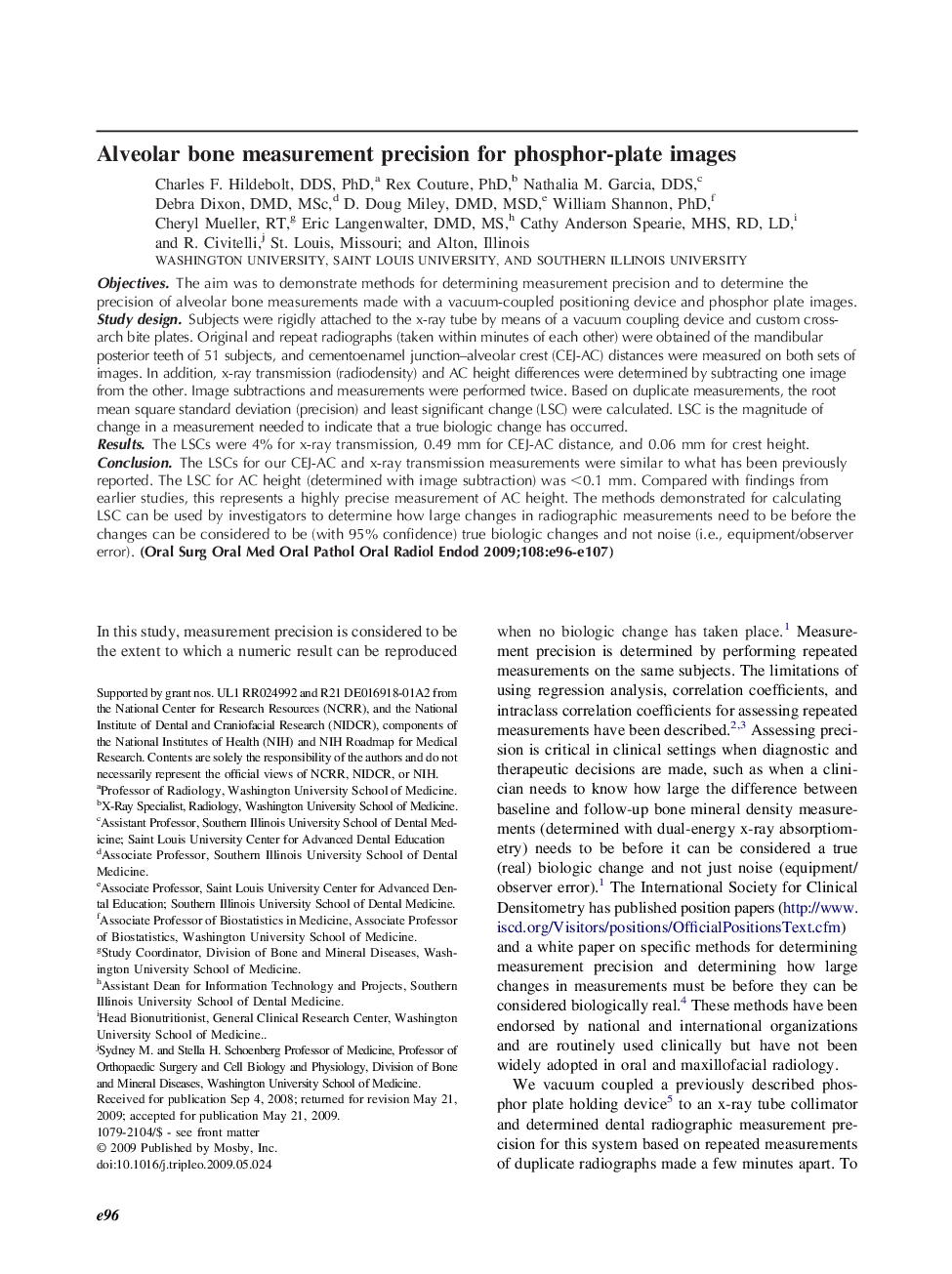| Article ID | Journal | Published Year | Pages | File Type |
|---|---|---|---|---|
| 3167993 | Oral Surgery, Oral Medicine, Oral Pathology, Oral Radiology, and Endodontology | 2009 | 12 Pages |
ObjectivesThe aim was to demonstrate methods for determining measurement precision and to determine the precision of alveolar bone measurements made with a vacuum-coupled positioning device and phosphor plate images.Study designSubjects were rigidly attached to the x-ray tube by means of a vacuum coupling device and custom cross-arch bite plates. Original and repeat radiographs (taken within minutes of each other) were obtained of the mandibular posterior teeth of 51 subjects, and cementoenamel junction–alveolar crest (CEJ-AC) distances were measured on both sets of images. In addition, x-ray transmission (radiodensity) and AC height differences were determined by subtracting one image from the other. Image subtractions and measurements were performed twice. Based on duplicate measurements, the root mean square standard deviation (precision) and least significant change (LSC) were calculated. LSC is the magnitude of change in a measurement needed to indicate that a true biologic change has occurred.ResultsThe LSCs were 4% for x-ray transmission, 0.49 mm for CEJ-AC distance, and 0.06 mm for crest height.ConclusionThe LSCs for our CEJ-AC and x-ray transmission measurements were similar to what has been previously reported. The LSC for AC height (determined with image subtraction) was <0.1 mm. Compared with findings from earlier studies, this represents a highly precise measurement of AC height. The methods demonstrated for calculating LSC can be used by investigators to determine how large changes in radiographic measurements need to be before the changes can be considered to be (with 95% confidence) true biologic changes and not noise (i.e., equipment/observer error).
